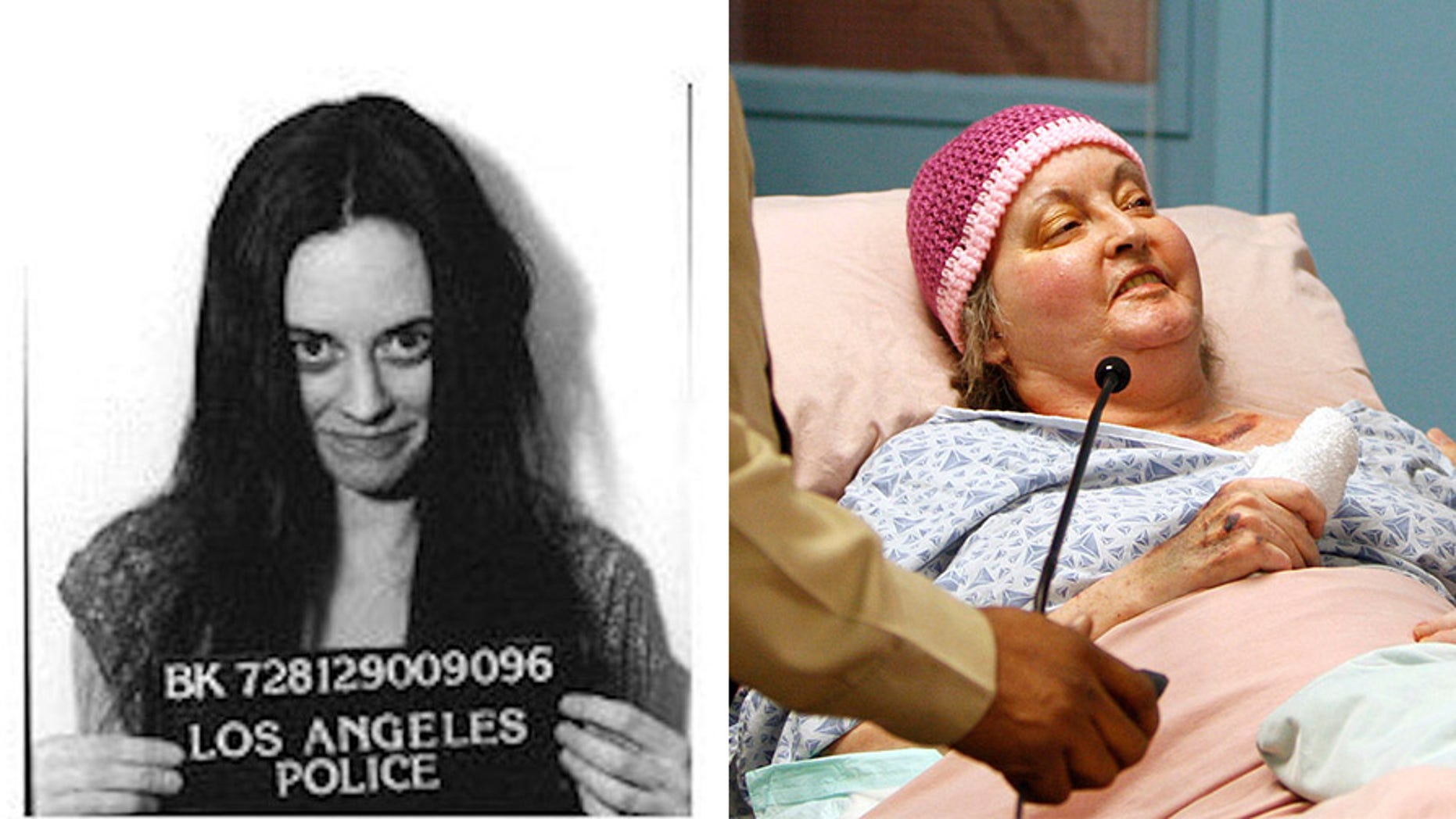Sharon Tate Autopsy: Unveiling The Truth Behind A Tragic Legacy
When you dive into the world of Sharon Tate autopsy, you're stepping into one of the darkest chapters in Hollywood history. The name Sharon Tate evokes not just an image of a rising star but also a symbol of tragedy that shocked the world. Her story is more than just a celebrity scandal; it’s a tale of human loss, justice, and the enduring quest for truth. In this article, we'll explore the details surrounding Sharon Tate’s autopsy, shedding light on facts that have been buried in time.
Back in 1969, the world was rocked by the brutal murder of Sharon Tate and her friends at the hands of the Manson Family. The details of her death, including the findings from her autopsy report, have fascinated and horrified historians, true crime enthusiasts, and the public alike. But why does this case still resonate so deeply today? It’s not just about the grisly nature of the crime; it’s about understanding the humanity behind the headlines.
Through this article, we aim to provide clarity and context around the Sharon Tate autopsy, ensuring that the facts are presented in a way that honors her memory while offering insights for those seeking knowledge. Let’s embark on this journey together, uncovering truths that have stood the test of time.
Read also:Dr Dre Zodiac Sign Unlocking The Secrets Behind The Music Legends Star Sign
Table of Contents
- Sharon Tate: A Brief Biography
- Overview of Sharon Tate Autopsy
- The Manson Family Connection
- Key Findings from the Autopsy
- The Legal Process and Implications
- Impact on Media and Society
- Psychological Effects on Survivors
- Sharon Tate’s Legacy
- A Modern Perspective on the Case
- Conclusion: Reflections on Truth and Justice
Sharon Tate: A Brief Biography
Early Life and Career
Before diving into the chilling details of the Sharon Tate autopsy, let’s take a moment to remember the woman behind the headlines. Born on January 24, 1943, in Dallas, Texas, Sharon Marie Tate grew up in a military family. Her father was a career officer in the U.S. Army, which meant frequent moves and a childhood spent across the globe. Despite these challenges, Sharon developed a passion for acting at an early age, honing her craft in school plays and local theater productions.
Her big break came in the early 1960s when she moved to Hollywood, where she quickly made a name for herself with her charm, beauty, and undeniable talent. Sharon starred in several films, including "The Fearless Vampire Killers" and "Eye of the Devil," earning critical acclaim and a growing fanbase. She was also engaged to Roman Polanski, a renowned director who would later become a central figure in her tragic story.
But her life was cut short on August 9, 1969, when she became one of the victims of the infamous Manson Family murders. Her story, however, continues to inspire and educate generations about the fragility of life and the importance of justice.
Overview of Sharon Tate Autopsy
Understanding the Process
The autopsy of Sharon Tate is a critical piece of the puzzle in understanding the events of that fateful night. An autopsy, or post-mortem examination, is a medical procedure conducted to determine the cause and manner of death. In Sharon’s case, the autopsy provided crucial evidence that helped convict the members of the Manson Family.
What exactly happens during an autopsy? Well, it’s a detailed examination of the body, often involving the collection of samples for toxicology tests and the documentation of injuries. In Sharon’s case, the autopsy revealed multiple stab wounds, evidence of blunt force trauma, and other injuries that painted a grim picture of her final moments.
These findings were not just important for the legal process but also for the public’s understanding of the brutality of the crime. The autopsy report became a cornerstone in the prosecution’s case, helping to bring those responsible to justice.
Read also:Noodlemagzine Your Ultimate Guide To Exploring The World Of Noodles
The Manson Family Connection
Who Were They?
You can’t talk about Sharon Tate without mentioning the Manson Family. This notorious group, led by the charismatic and manipulative Charles Manson, was responsible for a series of brutal murders that terrorized Los Angeles in the late 1960s. Their actions were driven by a twisted ideology that Manson had instilled in his followers, leading to the tragic deaths of Sharon Tate and several others.
The members of the Manson Family involved in Sharon’s murder included Tex Watson, Susan Atkins, Patricia Krenwinkel, and Leslie Van Houten. Each played a role in the heinous act, carrying out Manson’s orders with chilling precision. The trial that followed was one of the most publicized in American history, capturing the attention of the nation and the world.
Understanding the dynamics of the Manson Family is crucial to grasping the full scope of Sharon Tate’s tragedy. It’s a story of manipulation, brainwashing, and the dark side of human nature.
Key Findings from the Autopsy
Medical Insights
The Sharon Tate autopsy report revealed several key findings that painted a vivid picture of the violence she endured. Among the most significant were the multiple stab wounds to her body, indicating a prolonged and brutal attack. The report also noted defensive wounds on her hands, suggesting that Sharon fought valiantly against her attackers.
Additionally, the autopsy found evidence of blunt force trauma to her head, likely inflicted during the struggle. These injuries, combined with the severity of the stab wounds, ultimately led to her death. The toxicology report showed no signs of drugs or alcohol in her system, reinforcing the notion that Sharon was a victim of a random and senseless act of violence.
These findings were instrumental in the legal proceedings, providing concrete evidence of the brutality of the crime and helping to secure convictions for the perpetrators.
The Legal Process and Implications
Bringing Justice to Sharon Tate
The legal process following Sharon Tate’s murder was complex and emotionally charged. The trial of the Manson Family members was a media spectacle, with daily updates dominating the news cycle. The prosecution relied heavily on the autopsy findings to build their case, presenting a compelling narrative of premeditated murder.
Ultimately, the members of the Manson Family were found guilty and sentenced to death. However, due to changes in California’s death penalty laws, their sentences were commuted to life in prison. Despite this, the trial brought a sense of closure to Sharon’s family and friends, ensuring that justice was served in the best way possible.
The implications of the trial extended beyond the courtroom, sparking a national conversation about crime, justice, and the role of media in high-profile cases.
Impact on Media and Society
A Legacy in the Spotlight
The Sharon Tate autopsy and the subsequent trial had a profound impact on the media landscape. It marked a turning point in how the press covered crime, with a newfound focus on the victims rather than just the perpetrators. The case also highlighted the dangers of cults and the power of charismatic leaders to manipulate and control others.
Society’s fascination with the case continues to this day, with numerous documentaries, books, and films exploring the events surrounding Sharon’s death. This ongoing interest ensures that her story is never forgotten, serving as a reminder of the importance of justice and accountability.
The media’s role in shaping public perception cannot be overstated. Through careful reporting and analysis, the truth about Sharon Tate’s life and death has been preserved for future generations.
Psychological Effects on Survivors
Healing Through Understanding
The psychological impact of Sharon Tate’s murder on her family, friends, and the wider community cannot be underestimated. The trauma of losing a loved one in such a violent and senseless manner is something that no one should have to endure. For those closest to Sharon, the autopsy findings provided both closure and a deeper understanding of what happened that night.
Therapy and support groups have played a crucial role in helping survivors cope with their grief. By sharing their stories and experiences, they’ve found solace in knowing that Sharon’s memory lives on through their efforts to seek justice and promote awareness.
This psychological journey is an important part of the healing process, reminding us all of the resilience of the human spirit.
Sharon Tate’s Legacy
Remembering a Star
Sharon Tate’s legacy extends far beyond the tragic circumstances of her death. She was a talented actress with a bright future ahead of her, and her work continues to inspire new generations of actors and filmmakers. Her memory is honored through various initiatives, including scholarships and awards named in her honor.
Her story serves as a reminder of the importance of pursuing one’s dreams with passion and determination. Sharon’s life and career were cut tragically short, but her impact on the world of entertainment and beyond remains undeniable.
As we remember Sharon Tate, let’s celebrate her contributions to the arts and the lasting legacy she has left behind.
A Modern Perspective on the Case
Lessons Learned
Looking back on the Sharon Tate autopsy and the events surrounding her death from a modern perspective, we can see how far society has come in terms of understanding and addressing violent crime. Advances in forensic science and technology have made it easier to solve complex cases, ensuring that justice is served more efficiently.
However, the case also highlights the ongoing need for vigilance and awareness. As we continue to grapple with issues of crime and justice, the lessons learned from Sharon’s story remain relevant and important.
By studying the past, we can work towards a safer and more just future for all.
Conclusion: Reflections on Truth and Justice
In conclusion, the Sharon Tate autopsy is more than just a medical procedure; it’s a vital piece of history that sheds light on one of the darkest moments in Hollywood’s past. Through careful examination and analysis, we’ve uncovered truths that help us understand the events of that fateful night and the people involved.
As we reflect on Sharon’s life and legacy, let’s remember the importance of truth, justice, and remembrance. Her story is a powerful reminder of the resilience of the human spirit and the enduring quest for justice.
We invite you to share your thoughts and reflections in the comments below, and to explore other articles on our site that delve into the fascinating and often complex world of history and true crime.



